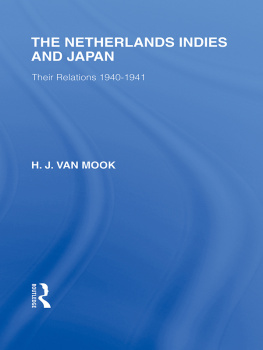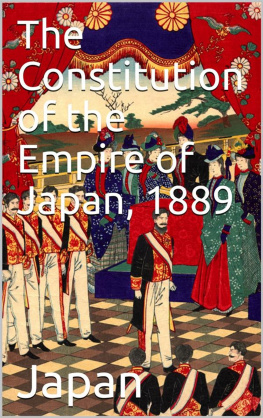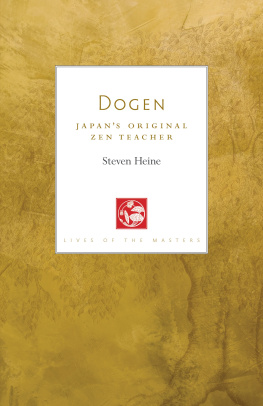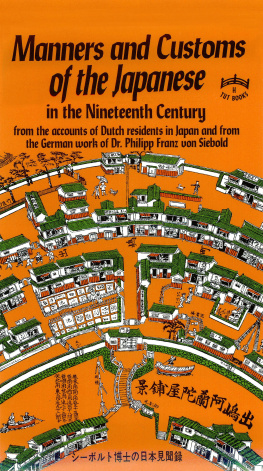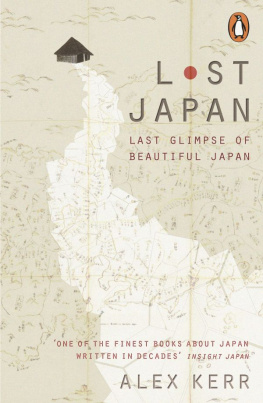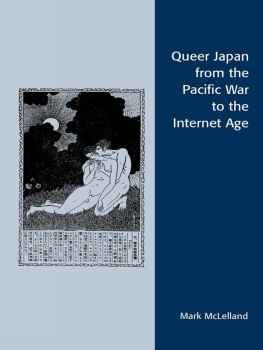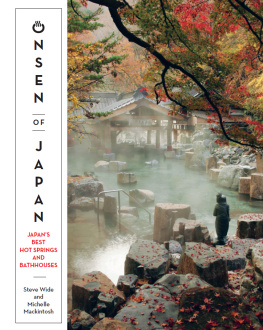Compiled and Edited by Hugh Cortazzi
First published 2001 by JAPAN LIBRARY
This edition published 2013 by Routledge
2 Park Square, Milton Park, Abingdon, Oxon, OX14 4RN
711 Third Avenue, New York, NY 10017
Routledge is an imprint of the Taylor & Francis Group, an informa business
Japan Society Publications 2001
All rights reserved.
No part of this publication may be reproduced or transmitted in any form or by any means without prior permission from the publishers in writing, except for the use of short extracts in criticism.
ISBN 1-903350-04-2 [case]
British Library Cataloguing in Publication Data
A CIP entry for this book is available
from the British Library
SPECIAL THANKS
The Japan Society and publishers wish to thank the Daiwa Anglo-Japanese Foundation, the Great Britain-Sasakawa Foundation and the UK-Japan Joint Research Project for their generous support.
This book is published as part of Japan 2001, which celebrates, in the UK, the culture and lifestyle of Japan. Its purpose is to deepen existing UK-Japan relationships and to foster new ones.
Set in Garamond 11 on 11.5 pt by Bookman, Hayes, Middlesex
KENSINGTON PALACE
LONDON W8 4PU
William Adams, who was the navigator of the Dutch ship Liefde which foundered off the coast of Kyushu in 1600, was the first Englishman to arrive in Japan. After the English factory at Hirado had closed in 1623, contact between the two nationalities was at best intermittent until the reopening of Japan to the West in 1853. The British subsequently played a significant role in the development of modern Japan in the Meiji period (18681912) and the relationship blossomed into the conclusion of the first Anglo-Japanese Alliance of 1902.
The British role in post-war Japan has inevitably been secondary to that of the United States, but it should not be underestimated. After the occupation, in which British Commonwealth Forces played a part, the British were suspicious of Japan, initially fearing a military revival and then the impact of Japanese exports on sections of British industry. But, as many of the contributions in this book show, the relationship gradually improved and by the end of the twentieth century Britain and Japan had developed warm and friendly relations, which covered the whole spectrum of activities cultural, economic and political and which are based on a great mutual respect, synergies of circumstances and a deep mutual liking.
The second half of the twentieth century has demonstrated that the skills of the Japanese in design, business and manufacture, combined with a strong sense of social discipline has created structures and institutions envied by many countries as they survey the 21st Century.
My brother William served in the British Embassy in Tokyo in the 1960s when Hugh Cortazzi, the Editor and Compiler of this volume, was Commercial Counsellor. I was fortunate enough to be able to visit him at that time and to see how traditional Japanese Architectural values were adapted to modern conditions and become a major contributor to the International style of building.
I am delighted that this Japan Society Publication is to be one of the Society's contributions to Japan 2001: the year will also mark the 110th anniversary of the founding of the Society, of which I am Patron. I believe that readers will find in this book not only much of interest but also some surprises and an overall sense of a growth of mutual regard and understanding.
Patron
Table of Contents
____________________
[Plate Section opposite page 294]
THE CURTAIN RISES
Peter Dean, Lewis Bush, John Figgess, Bill Beasley,
Peter Parker, Peter Bates, Lord Bramall, Ian Nish,
Lew Radbourne, Paul Bates, Christopher Wood,
John Morris, Edmund Blunden, Honor Tracy
General Piggott, Frank Ashton-Gwatkin.
Dorothy Britton Bouchier
CULTURE
Edmund Blunden, George Fraser, Dennis Enright,
Reg Close, Ronald Bottrall, FreddieTomlin, Francis King
Benjamin Britten, Stephen Spender, Sacheverell Sitwell,
Arthur Koestler, Kenneth Clark, Anthony Powell,
Laurens van der Post, David Hockney, Hugh Casson
Anthony Thwaite, Harry Guest, John Haylock, Peter Robinson
Peter Martin, Mike Barrett
Roger Buckley, Sue Hudson, Adrian McGreevey,
Susanna Pfeiffer, Sarah Johnson, Philip Everest
Ron Dore, Eric Ceadel, Bill Beasley,
Carmen Blacker, Geoffrey Bownas, Peter Swan,
Ian Nish, Dick Storry, Ken Gardner,
Peter Kornicki, Joy Hendry
Honor Tracy Junichiro Tanizaki and Yoshida Kenichi
Carmen Blacker Jiro Osaragi
HonorTracy and others Kenichi Yoshida
Lees Mayall Yukio Mishima
George Bull Graham Greene Shusaku Endo
Hugh Cortazzi Ryotaro Shiba
SOME EVENTS
Dick Ellingworth with a comment from Tony Rundall
Lesley Connors, Lydia Gomersall, Janet Hunter and Anne Kaneko, Peter Martin
Carolyn Whitehead, David Powers
Carolyn Whitehead, David Powers
Martin Campbell White
SOME OBSERVERS
Hessell Tiltman, Fred Emery, William Horsley,
Ian de Stains, Henry Scott Stokes, Bill Emmott
Julian Ridsdale, Patrick Jenkin,
Kenneth Baker, Denis Healey, David Young
BUSINESS AND FINANCE
Paul Bates, Michael Wingate, Neville Fakes
Lew Radbourne, Duncan Fraser
Martyn Naylor, David Wilkinson, Ann Wilkinson,
Dick Large, Graham McCallum
Peter Parker, Mike Perry
Ben Thome
Peter Hand
Edmund de Rothschild, HughTrenchard,
Christopher Purvis, John Naish
Eric Elstob and Dugald Barr
Chris Elston, Geoffrey Littler
OFFICIALS
John Figgess, Peter Dean,
Jimmy Abraham, Mike Forrest and Gail Forrest
Bill Williamson, Clive Bradley
Phillida Purvis
Merrick Baker-Bates
Sydney Giffard
Dick Ellingworth, Brian Hitch
John Whitehead
Eddie Ripley
Alan Pinnell
Lees Mayall, Nicholas Barrington
Vere Redman on what he learnt in and from Japan
Lees Mayall on Dan Lascelles and Oscar Morland
Oscar Morland, Tony Rundall,
Simone Warner (on Japan during Fred Warner's time as Ambassador),
Michael Wilford, John Whitehead, John Boyd, David Wright
An address by John Whitehead
by Gren Wedderburn
by Neville Fakes


